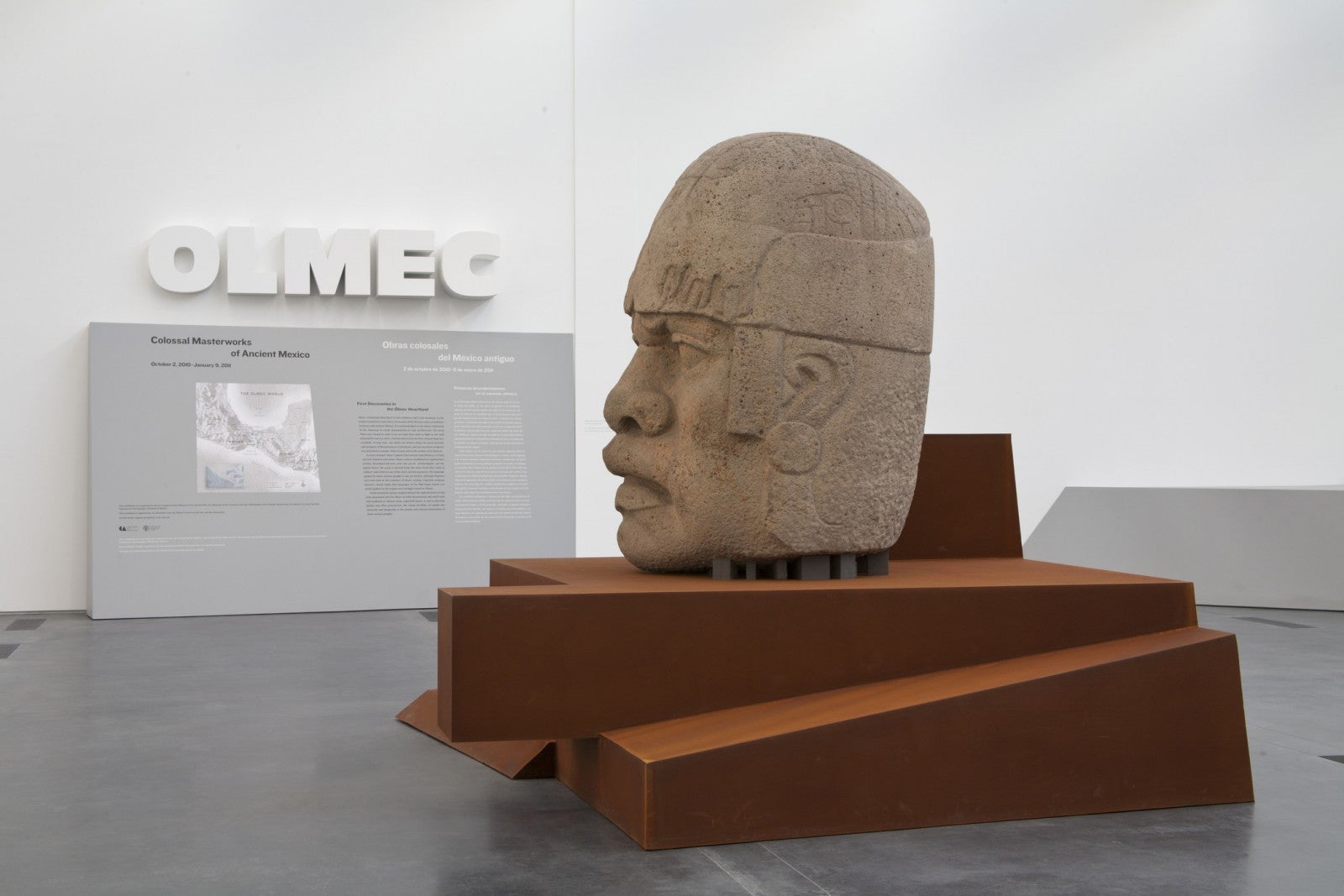Olmec: Colossal Masterworks of Ancient Mexico
Olmec: Colossal Masterworks of Ancient Mexico
Olmec civilization, which began sometime around 1400 BC, was centered in the Gulf Coast states of Veracruz and Tabasco. Olmec architects and artists produced the earliest monumental structures and sculptures in Mexico, including enormous basalt portrait heads of their rulers. The colossal sculptures in the exhibition weigh between 7 and 10 tons each.
The exhibition also includes small-scale jadeite objects that embody the symbolism of sacred and secular authority among the Olmec. Olmec artists were unsurpassed in their ability to work with this extremely hard stone, using elementary tools like chert, water and sand.
Olmec: Colossal Masterworks of Ancient Mexico, is co-organized by Mexico’s Instituto Nacional de Antropología e Historia, LACMA, and the Fine Arts Museums of San Francisco, and is curated at LACMA by Virginia Fields, senior curator of Arts of the Ancient Americas. The exhibition at LACMA will be the first presentation on the West Coast of the colossal works and precious small-scale sculptures produced by Mexico's earliest civilization.
This exhibition is supported by an indemnity from the Federal Council on the Arts and the Humanities.
Incomplete - Highlighted Objects, Flickr album, Artist Respond
Photo © 2010 Museum Associates/LACMA
- Oct 2, 2010–Jan 9, 2011
- Resnick Pavilion
This exhibition is supported by an indemnity from the Federal Council on the Arts and the Humanities.
Incomplete - Highlighted Objects, Flickr album, Artist Respond
Photo © 2010 Museum Associates/LACMA
Media
Behind the scenes during the painting of the murals that accompanied Olmec: Colossal Masterworks from Ancient Mexico on view at LACMA October 2, 2010–January 9, 2011.
